When considering siding or re-siding your home, it’s vital to prioritize both the aesthetic and functional aspects. Making informed decisions ensures the longevity and visual appeal of your investment. One standout choice is Hardie board siding. But before looking into its benefits, let’s understand the significance of quality in siding:
- Prioritize quality over cost: Siding your home is a significant investment, and it’s not the occasion to cut corners. It’s crucial to select the highest quality material that fits within your budget.
- Professional Installation: The expertise of the installation crew plays a pivotal role in the outcome. Hiring an experienced and professional team ensures the siding is installed correctly, maximizing its lifespan and performance.
- Collaborate with visionaries: Working with designers who have a clear vision can elevate the overall look of your home, making it not just functional but also aesthetically pleasing.
- Long-term investment: When done right, re-siding can be a solid investment, potentially offering returns for up to 50 years.
Wichita, KS, experiences a climate best described as humid subtropical. This means the city experiences various weather conditions, from hot summers to cold winters, and is also prone to severe weather events such as thunderstorms and tornadoes. Here’s how the climate of Wichita, KS, makes quality board siding a necessity:
- Durability in extreme weather conditions: Wichita’s climate is characterized by hot, humid summers with temperatures often exceeding 90°F (32°C) and cold winters where temperatures can drop below freezing. This is where a durable board siding that can withstand these temperature fluctuations without warping or cracking is required.
- Resistance to moisture and rot: The city receives about 32.7 inches (830 mm) of precipitation annually, with May being the wettest month. This means homes are often exposed to moisture, leading to rot and mold in traditional wood sidings.
- Protection against severe weather events: Wichita is situated in Tornado Alley and is susceptible to severe thunderstorms and tornadoes, especially in spring and early summer. This requires siding that offers resistance to impact from flying debris, ensuring homes remain protected during such events.
- Fire resistance: In addition to its resistance to weather events, non-combustible siding would be a safer choice for homes in areas prone to wildfires or accidental fires.
When siding your home, it’s essential to consider both the aesthetic and functional aspects. While budget constraints are real, it’s crucial to view this as a long-term investment and prioritize quality and durability.
What Is Hardie Board and What Are Its Pros and Cons?
As we have mentioned, Hardie Board is one quality siding. So what is Hardie Board? Hardie board is a premium siding material produced by James Hardie®.
It is crafted from a unique blend of sand, cement, and cellulose fibers. Despite its synthetic composition, Hardie Board boasts a warm and natural appearance, often drawing comparisons to the look of wood.
This siding material is available in a diverse range of colors, making it adaptable to any color scheme. Its widespread popularity is evident, with over 8 million American homes currently adorned with Hardie Board siding. Each of these homes showcases the versatility of Hardie Board’s aesthetics, emphasizing its ability to cater to a myriad of design preferences.
Pros of Hardie Board:
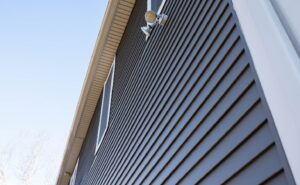
- Durability: Hardie Board is renowned for its longevity. It comes with a 30-year warranty and is engineered to last anywhere between 30 to 50 years, depending on the level of care it receives.
- Water resistance: Unlike wood, which is susceptible to water damage, Hardie Board stands strong against moisture, ensuring no warping or misshaping due to water exposure.
- Sunlight resistance: Hardie Board is not only resistant to water but also to the harsh effects of sunlight. This is a significant advantage over materials like wood, which can warp with consistent sunlight exposure.
- Low maintenance: One of the standout features of Hardie Board is its minimal maintenance requirements. In most scenarios, a simple cleaning session is all it needs, eliminating the hassles of sealing, staining, or repainting.
- Fire resistance: Homes with Hardie Board siding benefit from a reduced risk of house fires thanks to its fire-resistant properties.
- Bug resistance: Termites and other pests are a non-issue for Hardie Board. Unlike wood siding, which can be ravaged by bugs, Hardie Board remains impervious to such threats.
- Aesthetics: Hardie Board is a testament to design excellence. It masterfully mimics the appearance of authentic wood, offering a plethora of styles and colors to choose from. Whether it’s a quaint bungalow or a sprawling mansion, Hardie Board fits right in.
- Storm resistance: Hardie Board’s resilience extends to severe weather conditions. Heavy storms, which often devastate homes constructed with less durable materials, meet their match in Hardie Board siding. Recognized for its superior storm resistance, this siding is indispensable for homes in storm-prone regions, offering an added layer of protection.
- Cost-effectiveness: While its initial cost might be on the higher side compared to other siding materials, Hardie Board proves to be a cost-effective choice in the long run, primarily due to its extended lifespan.
Cons of Hardie Board:
- Initial cost: The upfront cost of Hardie Board siding can be a deterrent for some, as it is pricier than both vinyl and wood siding options. However, when considering its overall lifespan and reduced maintenance needs, it might prove to be a more economical choice in the long haul.
- Installation challenges: Installing Hardie Board can be a demanding task, primarily because of its weight, which surpasses that of vinyl and wood siding. It’s imperative to engage a seasoned and skilled installer to ensure the siding is fitted correctly and offers the protection homes need.
Hardie Board stands out as a premier siding material, offering a harmonious blend of durability, aesthetics, and resilience. Its multifaceted advantages, ranging from storm resistance to minimal maintenance, make it a compelling choice for homeowners.
Contact us here if you would like to find the best painting contractor for your residential or commercial needs.
Can You Paint Hardie Board?
Having covered what is Hardie Board, let’s address a common query: Can you paint Hardie Board? The answer is yes. However, there are specific Hardie board paint recommendations, considerations, and steps to follow to ensure the best results.
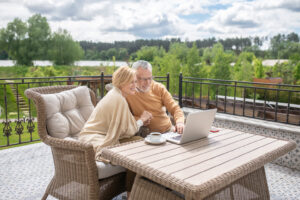
- Know when to paint Hardie Board: It’s essential to recognize when your Hardie board siding might need a new coat of paint. If you observe signs like chipping, flaking, or fading of the existing paint, it’s an indication that your siding could benefit from repainting.
- Cost implications: The cost to paint your Hardie board siding varies based on factors such as the brand, condition of the project, and quality of paint you choose. Whether you decide to hire a professional painter or do it yourself, it’s advisable to get an estimate from a paint or siding contractor to gauge the potential expenses.
- Professional vs. DIY: While you might be tempted to paint your Hardie siding yourself to save money, it’s not always the best idea. DIY efforts can sometimes lead to mistakes, which can be more expensive to rectify. Professionals not only offer estimates in advance but also come with the expertise and insurance to ensure a satisfactory job.
- Choosing the right paint: For Hardie boards, it’s recommended to use 100% acrylic exterior paint. Brands like Sherwin-Williams are often suggested for optimal results.
How a professional painting contractor such as Koehn would paint your Hardie Board siding
- Preparation: They would begin by cleaning the siding using a pressure washer to remove any dirt, mold, or mildew and any flaking or peeling paint should be removed. Since Hardie boards come pre-primed, there’s no need for an additional primer.
- Sealing: Sealing is crucial to caulk joints and seams to prevent moisture intrusion. Areas around windows, doors, eaves, and other edges should also be sealed.
- Paint selection: Opt for high-quality, 100% acrylic exterior paint. If you’re considering selling your home in the future, you might want to choose a trending exterior color.
- Application: For the best longevity and appearance, your contractor should apply two even coats of paint. This approach not only provides a consistent finish but also extends the life of your paint job.
- Longevity: When applied correctly, a paint job on Hardie board siding should last at least ten years. To ensure the longevity of your paint job, inspect the caulk annually, clean the siding regularly, and address any issues like mold, mildew, or stains promptly.
Some of the pros of repainting or repairing your Hardie Board siding with Koehn Painting include:
- Long-lasting results: After applying two even coats of paint to your Hardie board siding, the results can last for a long time. Typically, repainted Hardie board siding remains fresh for up to ten years without needing touch-ups.
- Cost-effectiveness: Professionally painting your Hardie board siding or repairing it when you notice damage is ideal, as it costs less than letting it deteriorate and need a full replacement.
- New look: Many homeowners choose to repaint their Hardie board siding purely for aesthetic reasons.
An Analysis of the Sustainability of Hardie Board Siding
We at Koehn Painting are at the forefront of siding repairs in Wichita, KS, and have had the privilege of working with various siding materials. One material that has caught our attention for its unique blend of durability and sustainability is the Hardie Board siding. Here’s our analysis of its sustainability:
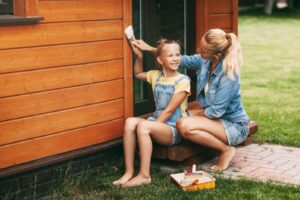
- Environmental impact: One of the standout features of Hardie Board siding is its minimal environmental footprint. Made primarily from sustainable raw materials, it doesn’t deplete natural resources at the rate that some other siding materials might. Moreover, its durability means fewer replacements over time, leading to reduced consumption of resources and less waste.
- Durability and longevity: From our experience, siding materials like wood, while aesthetically pleasing, require meticulous upkeep and are prone to moisture issues. In contrast, Hardie Board siding offers unparalleled durability. Its resistance to warping, buckling, and impact damage ensures homeowners won’t need frequent repairs. This longevity not only saves homeowners money but also means less frequent manufacturing and transportation of replacement materials, further reducing its environmental impact.
- Energy efficiency: A significant concern with damaged or inadequate siding is the potential for increased energy bills. Gaps, cracks, and other forms of damage can lead to heat loss during winter and make cooling systems work overtime during summer. Hardie Board siding provides an effective insulative barrier, ensuring homes remain energy-efficient throughout the year.
At Koehn Painting, we’re proud to offer our expertise and services in installing and repairing this innovative siding material, ensuring our clients enjoy its benefits for years.
If you want to learn more about Koehn and our painting services, feel free to get a quote from us.
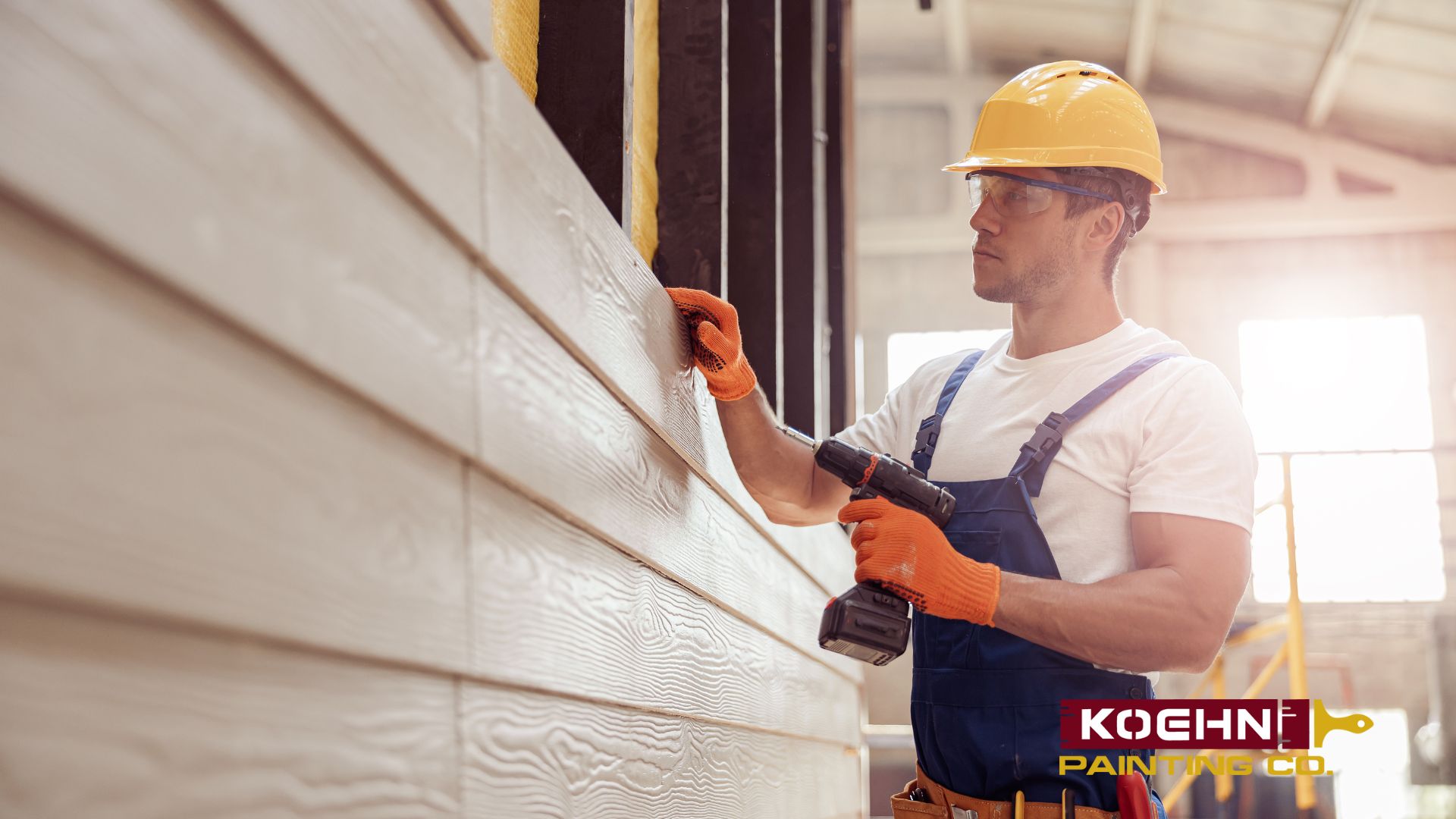



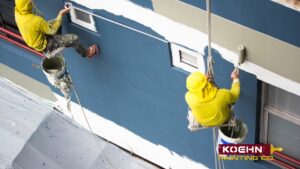

Recent Comments